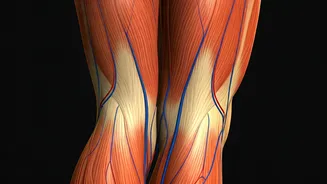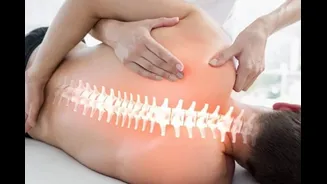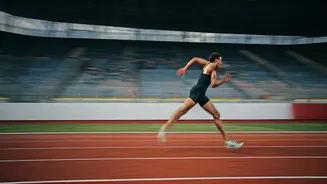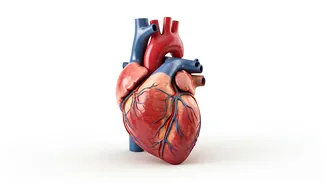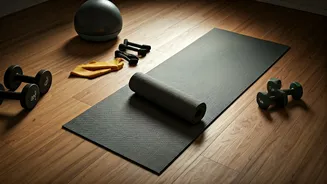Calf: Second Heart?
The calf muscle is frequently referred to as the body's 'second heart,' and this analogy underscores its critical role in maintaining good health. This
designation comes from its vital function in promoting circulation throughout the body. When you walk, run, or simply move your legs, the calf muscle contracts, squeezing the veins in your lower legs. This action helps pump blood back up to the heart, working in tandem with the heart itself. This venous return is critical because it ensures that deoxygenated blood gets back to the heart, where it can be re-oxygenated and circulated throughout the body again. Without this assistance from the calf muscles, blood can pool in the legs, leading to swelling, discomfort, and potentially more serious conditions. The calf muscles are essentially your body's backup pump, continually assisting in the efficient transport of blood.
Importance of Strength
Maintaining strong calf muscles is not merely about aesthetics; it is vital for overall health and well-being. Strong calf muscles contribute to enhanced balance and stability, making daily activities like walking and standing easier and reducing the risk of falls, particularly as one ages. Improved circulation, thanks to the calf's pumping action, lessens the chances of blood clots and the development of conditions like varicose veins. Strong calves also provide support to the ankles and knees, alleviating strain on these joints. Furthermore, calf strength can boost athletic performance. Whether you're a runner, a dancer, or simply enjoy active hobbies, robust calf muscles can enhance your power, endurance, and agility. Investing in calf muscle strength is, therefore, an investment in long-term health and the ability to maintain an active lifestyle.
Walk More Smartly
Walking more, but walking smartly, is a fantastic way to bolster calf muscle strength while integrating physical activity into your routine. Instead of just strolling, make a conscious effort to incorporate techniques that maximize calf engagement. Try walking on varied terrains, such as hills or uneven surfaces, to challenge the calf muscles differently. Varying your pace, incorporating bursts of speed, and longer strides can further enhance the workout. Focus on maintaining proper posture, which means standing tall, engaging your core, and looking ahead. This posture not only makes walking more efficient but also ensures that you use your calf muscles effectively with each step. Regular, mindful walking can yield significant benefits. Walking helps strengthen the calf muscles, promotes better circulation, and improves overall cardiovascular health. It's an accessible and effective method for strengthening the 'second heart.'
Seated Heel Raises
Seated heel raises, easily done during desk work, offer a convenient way to strengthen your calf muscles even when you are at your desk. While seated, keep your feet flat on the floor, and slowly lift your heels as high as possible, only raising your toes. Hold this position for a few seconds before lowering your heels back down. Repeating this exercise multiple times throughout the day can provide a focused workout for your calves, without requiring any equipment or dedicated time slots. This exercise specifically targets the soleus muscle, located deeper within the calf, offering a different form of strengthening than exercises that target the gastrocnemius. Make sure that you concentrate on controlled movements, focusing on the contraction and release of the calf muscles. Regular inclusion of seated heel raises can provide enhanced calf strength.
Footwear, Posture Matter
The type of footwear and posture you adopt play important roles in calf health. Choosing shoes with proper support and cushioning is essential, as they can help absorb shock and reduce strain on your calf muscles. Avoid wearing shoes with inadequate support for long periods, as they can make the muscles work harder and may lead to fatigue or injury. Maintain correct posture. Standing and walking with correct posture helps evenly distribute weight and engage the correct muscles, including the calves. Be mindful of how you walk and stand. Avoid slouching and try to maintain a straight back, engaged core, and relaxed shoulders. This will help reduce strain on your calf muscles and promote better circulation. Paying close attention to these elements will allow for a lower risk of injury, while enhancing the effectiveness of your calf muscle exercises.
Stretch and Hydrate
Stretching and staying hydrated are vital elements for maintaining calf muscle health. Regular stretching improves flexibility, which reduces the chance of muscle strains or injuries. Common stretches, like the wall calf stretch or the downward-facing dog pose, can make a positive impact. Hold each stretch for about 20-30 seconds, breathing deeply to maximize the benefits. Hydration ensures that the muscles receive adequate nutrients and remain supple. Dehydration can lead to muscle cramps and fatigue, both of which can undermine your training and everyday activities. Drink enough water daily, and increase your intake, particularly after a workout. Stretching and hydration, as combined practices, support muscle health and ensure they perform their essential functions. Incorporating these simple habits can help you make a significant difference in your physical well-being.





